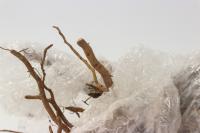1、 Curing method
1. Temperature: during the curing process, the curing temperature needs to be controlled. The most suitable temperature for its growth is between 15 and 25 degrees
2. Watering: the climate is different in different seasons, so the way of watering is also different. In spring and autumn, we don't need too much watering. We should keep the soil dry for a long time, because its growth capacity is not the strongest at this time, and the demand for water is not so great. Summer is just the opposite. Summer is its growth period. It has a high demand for water. It needs to keep the soil moist for a long time. Generally, it is watered every other day. Generally, it is not watered in winter. Only when the basin soil turns white, it needs watering
3. Fertilization: it has little demand for nutrients. It only needs to apply fertilizer two or three times during the growth period. The fertilizer mainly consists of nitrogen and phosphorus. When it is used, the fertilizer should be diluted before it can be used, and the soil should be loosened during application, so as to avoid root burn
4. Light: it is a sunny plant and can accept sunshine all day, but the sunshine in summer is poisonous and needs proper shading. It can be illuminated normally in other times
2、 Breeding skills
1. Propagation: it can be propagated by cutting. When cutting, you need to use one centimeter thick lateral rooting. After digging it out, cut it into ten centimeter cuttings, and then insert it into a deep ditch of about ten centimetres. When cutting, you need to insert obliquely. You need to expose a quarter of the positive root strip, and then fill it with soil
2. Pruning: in spring, you need to prune the top dry part of the biennial branches, which can make the remaining branches grow stronger
3、 Problem diagnosis
1. Insect pests: Willow bat moth is the main pest against thorn berries. If it is not handled in time, it will seriously affect the yield of the next side. If the plant is found to be infected, the damaged branches need to be trimmed before the emergence of pests, and then sprayed with chlorothalonil to disinfect and resist bacteria
2. Disease: if the leaves of the plant are covered with a layer of white powder, it may be infected with powdery mildew. To treat this disease, the infected part needs to be cut off and then sprayed with methyletobuzine powder
4、 Other issues
1. Edible: it is edible
2. Toxicity: it is non-toxic. It can be eaten or used as medicine

 jackfruit
jackfruit snake plant
snake plant hibiscus
hibiscus hydrangea
hydrangea lavender
lavender Green roses climb al...
Green roses climb al... If you don't pay att...
If you don't pay att... Management of four g...
Management of four g...

































